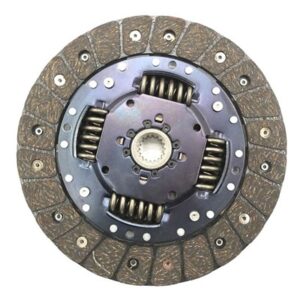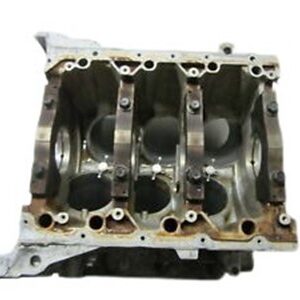Valve Cover
The Valve Cover, also known as a rocker cover, stands as a crucial engine component, crafted from durable plastic or metal and securely bolted atop the cylinder head.
Its significance lies in the preservation of engine health and performance by effectively containing oil within the engine.
This integral part prevents oil leaks and ensures optimal functioning. Engineered for longevity and reliability, our valve covers are designed to meet the highest standards, catering to a wide range of vehicles, including LS models.
Each valve cover seamlessly integrates with the engine, forming a secure seal with the assistance of a high-quality valve cover gasket.
Enhance your engine’s longevity and performance with our premium valve covers a testament to precision engineering and durability.
Choose excellence for your vehicle, as our valve covers are crafted to exceed expectations, offering a perfect fit for various car models.
$900.00
CompareValve Cover
The valve cover, also known as the rocker cover, is a crucial component of a vehicle’s engine that protects and contains the upper part of the engine where the valve train operates. It plays a significant role in engine performance, maintenance, and longevity. The valve cover not only safeguards the engine’s internal components but also contributes to the engine’s overall efficiency and reliability.
Material and Construction
Valve covers are made from a variety of materials selected for their durability, heat resistance, and weight:
- Aluminum: Many are constructed from aluminum due to its strength, lightweight properties, and ability to dissipate heat effectively. Aluminum covers are commonly found in performance and high-end vehicles.
- Steel: Steel is also used, particularly in more traditional or budget-friendly engines. Steel provides durability and resistance to impact, though it may require additional coating to prevent rust and corrosion.
- Plastic: Engineered plastics, such as thermoplastic or composite materials, are used in some modern vehicles. Plastic valve covers are lightweight and resistant to corrosion, though they may not offer the same level of heat resistance as metal covers.
- Rubber or Silicone Gaskets: The valve cover includes a gasket made from rubber or silicone to create a seal between the cover and the engine. This gasket prevents oil leaks and ensures a tight fit.
Design and Functionality
The designed with several key features to ensure it functions effectively:
- Oil Containment: The primary function of the valve cover is to contain and seal the oil in the upper part of the engine. It prevents oil from leaking out and keeps contaminants out of the valve train area.
- Ventilation: Many feature ventilation systems or breathers to allow for the release of gases and pressure buildup within the engine. This helps to maintain proper engine pressure and prevent oil leaks.
- Access Points: The designed with access points or openings for valve adjustments, rocker arms, and other components. These access points allow for necessary maintenance and adjustments to the valve train.
- Heat Shielding: Some include heat shielding or insulating materials to protect the engine oil and components from excessive heat. This helps to prevent oil degradation and maintain optimal engine performance.
Performance and Benefits
The valve cover contributes to several aspects of engine performance and reliability:
- Oil Sealing: By sealing the oil within the engine, the valve cover prevents leaks and maintains proper lubrication for the valve train and other moving parts. This is crucial for engine longevity and performance.
- Contaminant Protection: This helps to keep dust, dirt, and other contaminants out of the valve train area. This protection prevents potential damage and ensures the smooth operation of engine components.
- Reduced Maintenance: A properly functioning valve cover reduces the need for frequent maintenance by preventing oil leaks and ensuring proper oil distribution. This leads to a more reliable and low-maintenance engine.
- Improved Performance: Effective sealing and ventilation provided by the contribute to the overall efficiency and performance of the engine. Proper lubrication and reduced contaminants help maintain optimal engine operation.
Maintenance and Care
Proper maintenance and care of the are essential for ensuring its effectiveness and preventing potential issues:
- Regular Inspection: Periodically inspect the for signs of leaks, cracks, or damage. Check the gasket for wear or deterioration, and replace it if necessary.
- Oil Changes: Regularly change the engine oil and filter to prevent contamination and ensure proper lubrication. This maintenance helps to prolong the life of the valve cover and other engine components.
- Cleanliness: Keep the surrounding area clean to prevent the buildup of dirt and debris. This helps maintain a proper seal and prevents potential leaks.
- Professional Servicing: If you notice any issues with the valve cover, such as oil leaks or engine performance problems, have a professional mechanic inspect and service the cover as needed.
Advanced Features and Technologies
Modern may include advanced features to enhance their performance and functionality:
- Integrated Sensors: Some incorporate integrated sensors for monitoring engine conditions, such as oil temperature or pressure. These sensors provide valuable data for engine diagnostics and performance optimization.
- Heat Management: Advanced may feature enhanced heat management technologies, such as heat shields or thermal barriers, to improve heat dissipation and protect engine components.
- Custom Designs: High-performance or custom vehicles, may be designed with unique styles, finishes, or branding elements. Custom designs can enhance the engine bay’s appearance and reflect the vehicle’s personality.
Conclusion
The valve cover is a vital component that plays a key role in protecting the engine, maintaining oil integrity, and ensuring optimal performance. Its durable construction, effective sealing, and ventilation features contribute to engine reliability and longevity. Regular maintenance and timely care of the valve cover are important for preventing leaks, ensuring proper lubrication, and maintaining overall engine efficiency. By understanding the functions and benefits of the valve cover, vehicle owners can ensure their engine operates smoothly and remains in excellent condition.
Based on 0 reviews
Be the first to review “Valve Cover” Cancel reply
Related products
-
Engine
Clutch Disc
0 out of 5(0)The clutch disk, an integral component within the clutch assembly, plays a pivotal role in facilitating seamless transitions between gears in a vehicle.
Crafted with precision, the clutch disc serves as the rotating foundation to which the friction material is expertly affixed.
This crucial element ensures the efficient transfer of torque, thanks to the friction generated by the specialized material pads on either side of the disk.
A key part of the comprehensive clutch plate also referred to as the clutch kit, exemplifies engineering excellence.
Trustworthy and durable, it contributes to the overall performance and longevity of the clutch assembly.
Elevate your driving experience with our premium clutch disks, meticulously designed for compatibility with a range of clutch kits.
SKU: n/a -
Engine
Harmonic Balancer (Crank Pulley)
0 out of 5(0)The Harmonic Balancer (Crank Pulley) stands as a pivotal component in automotive engineering, seamlessly marrying functionality with precision.
Crafted from a blend of robust metal and resilient rubber, this circular device finds its purpose at the forefront of the crankshaft. Its primary role lies in the adept absorption of vibrations, ensuring a smooth and stable engine performance.
Affixed to the crank pulley, this harmonious union extends its influence to drive essential accessories such as the air conditioner, amplifying its significance in the vehicle’s functionality.
Engineered for optimal efficiency, the internal rubber composition meticulously mitigates vibrations, maintaining an equilibrium that safeguards the engine’s integrity.
The Harmonic Balancer is not just a component; it’s a testament to innovative design and reliability, ensuring your automotive experience remains harmoniously balanced.
SKU: n/a -
Engine
Clutch Master Cylinder
0 out of 5(0)The Clutch Master Cylinder, an integral component of hydraulic clutch systems, plays a pivotal role in transmitting force seamlessly from the clutch pedal to the slave cylinder.
Engineered with precision, this hydraulic marvel operates on a straightforward principle, ensuring optimal performance in every engagement.
The master cylinder, connected to the clutch pedal through a meticulously designed lever mechanism, exemplifies efficiency and reliability.
Crafted for compatibility with a variety of brands, our Clutch Master Cylinder stands as a testament to quality and durability.
Its robust design ensures smooth and responsive clutch operation, enhancing the overall driving experience.
Trust in the seamless functionality of our Clutch Master Cylinder, a key player in hydraulic clutch systems, designed to meet the highest standards of performance and longevity.
Elevate your driving experience with confidence, as our product guarantees precision and reliability across diverse automotive brands.
SKU: n/a -
Engine
Engine Mounts
0 out of 5(0)An engine mount, also known as a motor mount or engine holder, plays a crucial role in securing an engine within machinery, while simultaneously mitigating shocks and vibrations during operation.
Crafted with precision, our engine mounts ensure optimal performance and durability for a wide range of applications.
The benefits of employing our high-quality, rubber mounts are evident:
- Vibration and Noise Reduction: Our engine mounts effectively minimize excess engine vibrations and noise, enhancing the overall operational experience.
- Engine Protection: By preventing excessive vibrations, our mounts safeguard engines from potential damage, ensuring longevity and reliability.
- Extended Lifespan: The robust construction of our mounts contributes to the prolonged lifespan of both the engine and connected sensor components, minimizing the need for frequent replacements.
- Transmission Protection: These mounts serve as a protective barrier, preventing damage to vital parts such as the transmission, thereby optimizing the overall functionality of your machinery.
Choose our premium engine mounts for a reliable and efficient solution that transcends brand distinctions, delivering unparalleled performance across various applications.
SKU: n/a -
Engine
Engine Block
0 out of 5(0)Engine Blocks, also known as Cylinder Blocks, stand as the robust foundation of automotive powerhouses.
Meticulously engineered, they house essential components such as cylinders, intake and exhaust passages, coolant channels, and crankcases.
Crafted with precision, our Engine parts ensure optimal performance and longevity, delivering the reliability your vehicle demands.
These parts seamlessly integrate with various systems, offering a harmonious synergy that propels your vehicle’s efficiency to new heights.
Trust in the durability and functionality of our Engine Blocks, meticulously designed to meet the highest standards of automotive excellence.
Elevate your driving experience with a powerhouse that embodies innovation and quality – because every journey deserves the reliability that comes with our exceptional Engine parts.
SKU: n/a









There are no reviews yet.